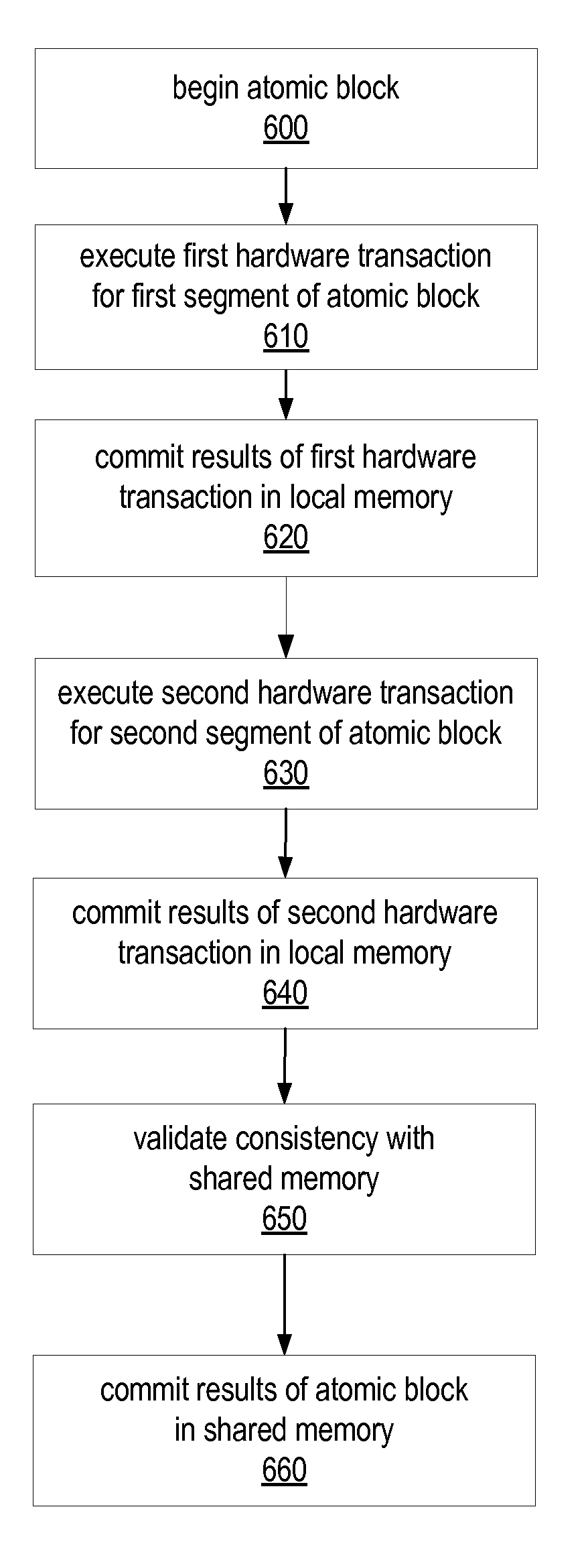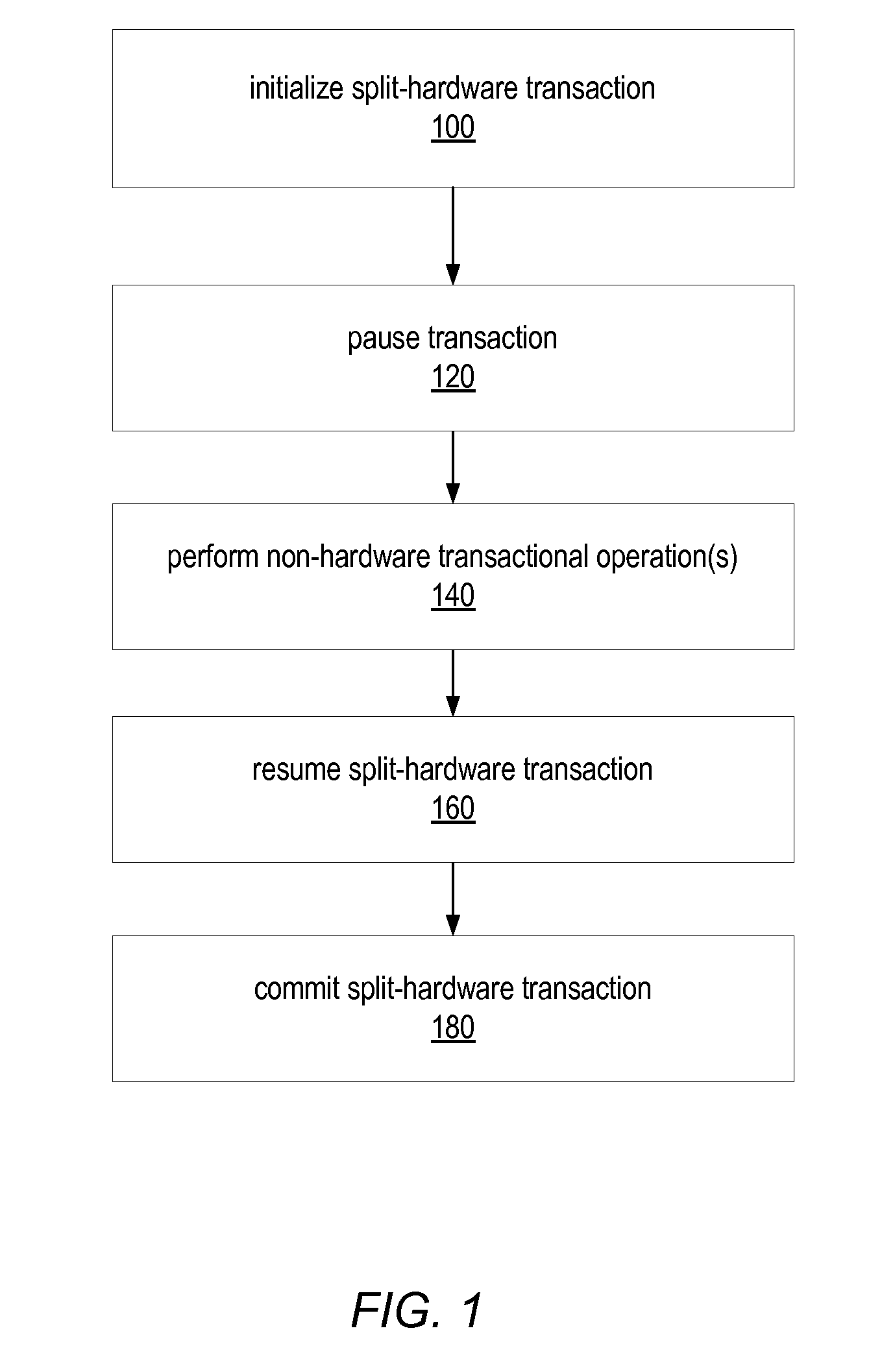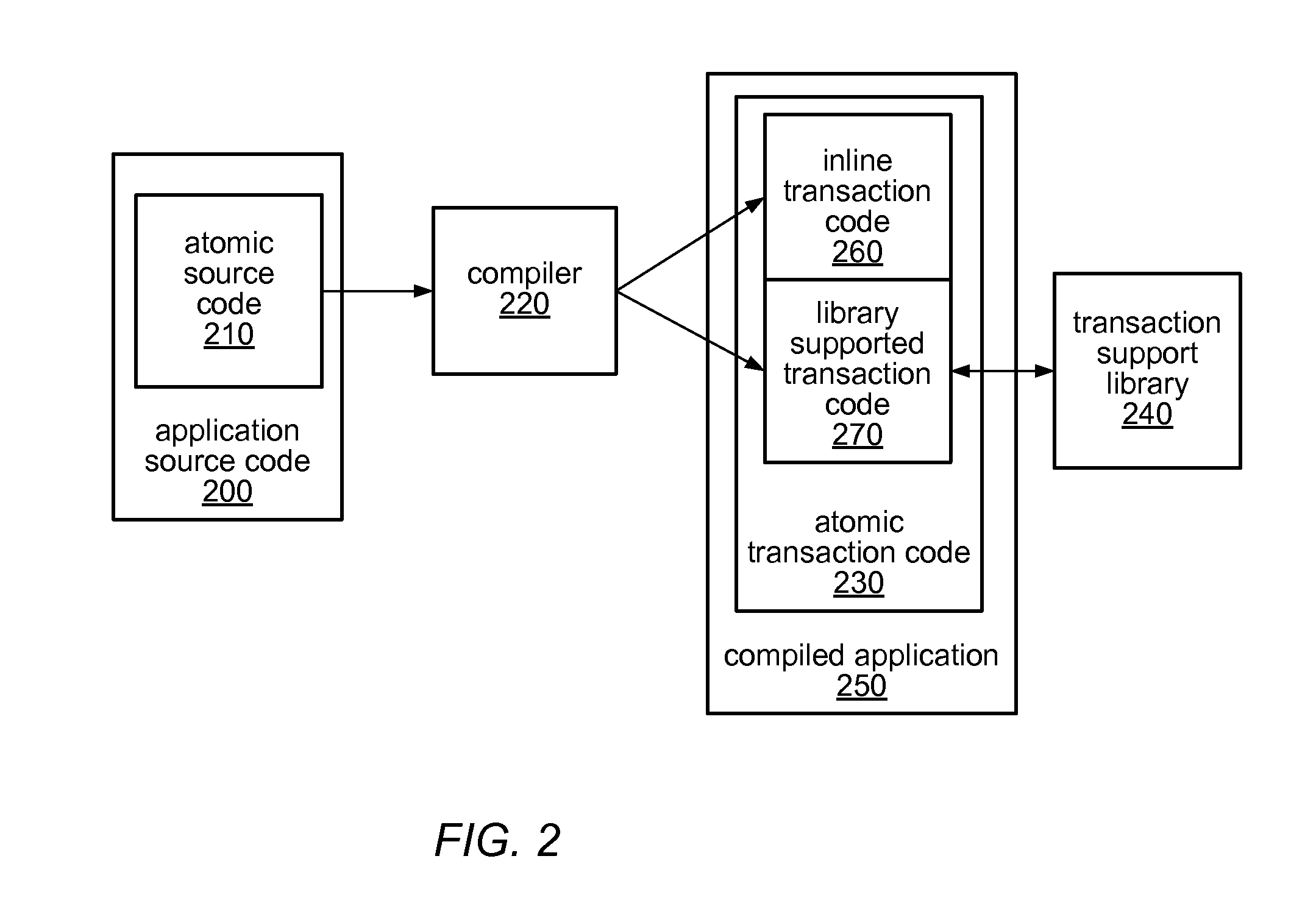System and Method for Split Hardware Transactions
a hardware transaction and hardware technology, applied in the field of split hardware transactions, can solve the problems of affecting performance, affecting performance, and affecting the ability of concurrent threads to communicate,
- Summary
- Abstract
- Description
- Claims
- Application Information
AI Technical Summary
Benefits of technology
Problems solved by technology
Method used
Image
Examples
Embodiment Construction
[0024]A split hardware transaction (SpHT) involves splitting an atomic block of code so that it will be executed using multiple hardware transactions, while logically seeming to take effect as a single atomic transaction. In some embodiments, a split hardware transaction (SpHT) may allow execution of atomic blocks including NHT operations without relying on exclusively software transactions. For instance, a split hardware transaction may use a collection of hardware transactions that are combined together (using some software support) so that they logically seem to take effect atomically. This allows an atomic block to be split so that it will be executed using multiple hardware transactions, while executing the NHT operations in between the hardware transactions. Although a split hardware transaction may use some software support to combine the different hardware transactions into one logically atomic operation, it may execute much faster than a corresponding software transaction e...
PUM
 Login to View More
Login to View More Abstract
Description
Claims
Application Information
 Login to View More
Login to View More - R&D
- Intellectual Property
- Life Sciences
- Materials
- Tech Scout
- Unparalleled Data Quality
- Higher Quality Content
- 60% Fewer Hallucinations
Browse by: Latest US Patents, China's latest patents, Technical Efficacy Thesaurus, Application Domain, Technology Topic, Popular Technical Reports.
© 2025 PatSnap. All rights reserved.Legal|Privacy policy|Modern Slavery Act Transparency Statement|Sitemap|About US| Contact US: help@patsnap.com



